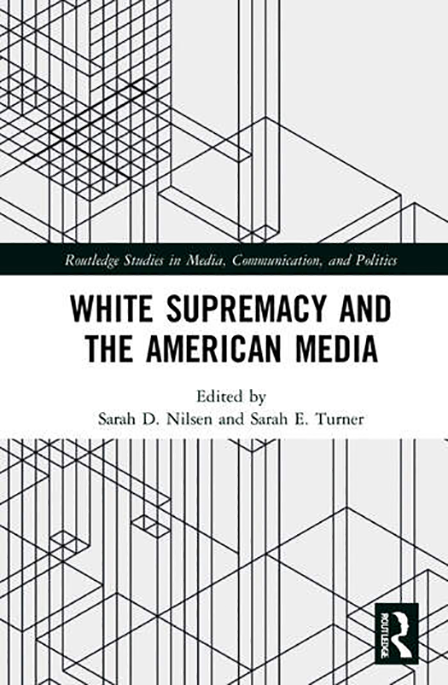UVM educators Sarah Nilsen and Sarah Turner are awaiting publication of their third book together — and in it, they and other scholars argue that white supremacy pervades films, shows, video games and social media.
“This is one of the first books that actually addresses the topic,” said Nilsen, an associate professor in the Department of English. “In media studies in general, there's this huge hole. You have hundreds of books on directors like Hitchcock, but there’s minimal focus on more topical subjects like white supremacy.”
The book, “White Supremacy and the American Media,” features more than a dozen original essays from the country’s preeminent critical race theory scholars. Nilsen and Turner, a senior lecturer in the English department, co-edited the volume.
It’s set to be released in November through Routledge.

“We team-taught a course a dozen years ago on race and television and realized that there was literally nothing out there as a text,” Turner said.
The pair solicited articles from a wide range of scholars to create a text to fill that void. Their first book, “The Colorblind Screen: Television in Post-Racial America,” explored the role of colorblind racism in television. That book led to their second collection, “The Myth of Colorblindness: Race and Ethnicity in American Cinema.”
A core concept in those collections and the new book, colorblind racism is “what many people consider the predominant form of racism in America today, which denies that racism itself exists,” Nilsen said. “This belief adheres to the idea that we've gone past racism, and now we no longer see race anymore, so we are colorblind as a country.”
One form of colorblind racism is found in the casting of many Hollywood films and television programming, the duo said. Turner used “The Handmaid’s Tale” as an example: “(Although it) seems like a great feminist piece, it's really problematic because it utilizes colorblind casting in a way that casts women of color in roles that erase their race,” she said.
Viewers of the HBO series may watch and think that it prioritizes diversity because one of the main characters is Black. The way the character is portrayed, however, ignores the complexity of Black identity and the intersectionality surrounding it, Turner said.
“If you don't acknowledge someone's race in a role, you're erasing that race,” she said. “Colorblind casting perpetuates colorblindness, which perpetuates racism.”
Nilsen and Turner think the chapter on gaming in their new book might appeal to students. Gaming, they said, has become an important recruiting tool for white supremacist groups.
“Non-white gamers who create avatars who are not white or who declare themselves not white are seen as disrupting and causing ripples in gaming,” Turner said, adding, “They're accused of introducing ‘the race card’ into what is presumed to be neutral territory.”
Nilsen said that scholars have shown how first-person-shooter war games, such as “Call of Duty,” are part of a “military-digital-games complex,” in which the U.S. military has used games for recruitment and to train soldiers for real wars.
“During the War on Terror, games were used as part of the U.S. military’s training regime,” she said. “Many of these digital war games are set in Muslim-majority countries and treat ‘Muslim Others’ as the target for attack, dehumanizing them and putting the player in the first-person-shooter position defending the United States.”
Similarly, Nilsen writes about the 2014 movie “American Sniper” in the new text. “(It) was funded by two politically conservative hedge fund managers whose earnings were made during the subprime mortgage collapse,” she said. She argues that the film promotes a white nationalist ideology that supports “guns, God and country.”
Former President Donald Trump’s secretary of treasury, Steve Mnuchin, was one of the executive producers of “American Sniper.”
“These media moguls are not peripheral to the levers of power,” Nilsen said. “They control the levers of power.”
Trump’s presidency, the pair said, served as part of the inspiration for the new book because of his racist rhetoric and past as a media star.
Nilsen said that part of critical race theory is seeing who is pulling the levers of power, and why, by looking critically at media itself.
Another type of film discussed in the book is the racial reconciliation film, such as “Green Book.” Ostensibly the true story of a Black musician, the film’s focus shifts to the racist white driver. “The main character then becomes the white person who overcomes his racism, and the audience feels good about that,” Turner said.
That theme is one that people evidently love to see, the duo said, pointing to how that film and ones like it — such as “The Help” and “The Blind Side” — have fared well at award shows.
Nilsen and Turner both teach classes in the history of film and television, critical race theory and popular culture — and their intersections with race and gender.
Willow Zartarian in a Junior Economics major with a passion for writing.